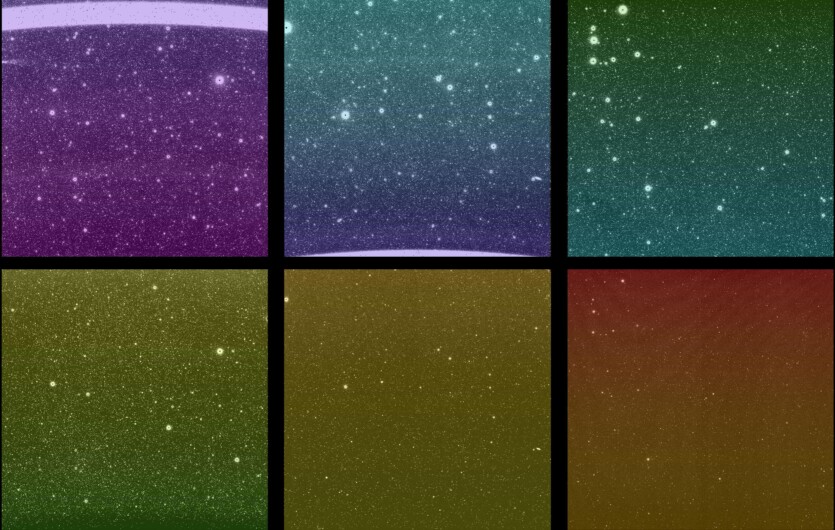Launched March 12 NASA’s new infrared telescope SPHEREx has sent its first images into space, each of which captures more than 100 thousand light sources.
SPHEREx is capable of detecting sources in the infrared range and dividing light from them into 102 shades. This allows astrophysicists to conduct research on ancient scientific questions about the origin of water, determine the distance of galaxies, and even study the history of the early universe.
The first images obtained from SPHEREx have not yet been properly calibrated and are not ready for thorough scientific analysis. However, they demonstrate the telescope’s ability to view a wide panorama of outer space. Each bright spot in the images represents the light source, such as a star or galaxy, and each image is expected to contain more than 100 thousand detected sources.

Each SPHEREx exposure consists of six images, one for each detector. To take these first images, members of the science team assigned a visible color to each infrared wavelength that the telescope detected. Each detector is capable of detecting light sources in 17 wavelength bands of the infrared spectrum. In total, the telescope is capable of observing the Universe in 102 bands. This way, scientists can determine the exact distance to distant galaxies and what certain objects in space are made of, which allows them to study the physics of the early Universe, the origin of water, and other topics that have long been of interest to science.
The redder areas in the images represent longer wavelengths, while the purple areas represent shorter wavelengths. The full field of view of SPHEREx covers the top three images; the same area of the sky is also shown in the bottom three images.

The telescope will begin full operation at the end of April. Currently, its detectors are being cooled, as they require a very low temperature to conduct research in the infrared range, around minus 210 C°. This is necessary because heat can interfere with SPHEREx’s ability to detect infrared light.
While such leading telescopes as Hubble and James Webb are aimed at studying localized regions of the Universe, SPHEREx allows for a much more extensive observation of outer space. Over the course of the mission, which is expected to last for the next 2 years, SPHEREx will collect light from hundreds of millions of stars and galaxies at longer wavelengths than any other telescope to view the entire sky. As a result, 4 large-scale surveys of the visible Universe.
The light captured by the SPHEREx is directed to three detectors, over which color filters are mounted. Whereas a standard color filter blocks all but one wavelength, the wavelengths blocked by the SPHEREx filters change gradually from the top of the filter to the bottom.
SPHEREx is able to see light through the densest dust clouds, where visible light does not pass through, but infrared radiation does. This will enable it to view the most distant stars and galaxies in very high detail.
NASA launches SPHEREx space telescope for $488 million — it will show what was hidden from Webb and Hubble’s «eyes»
Source: SciTechDaily
